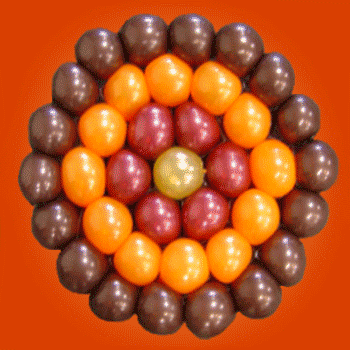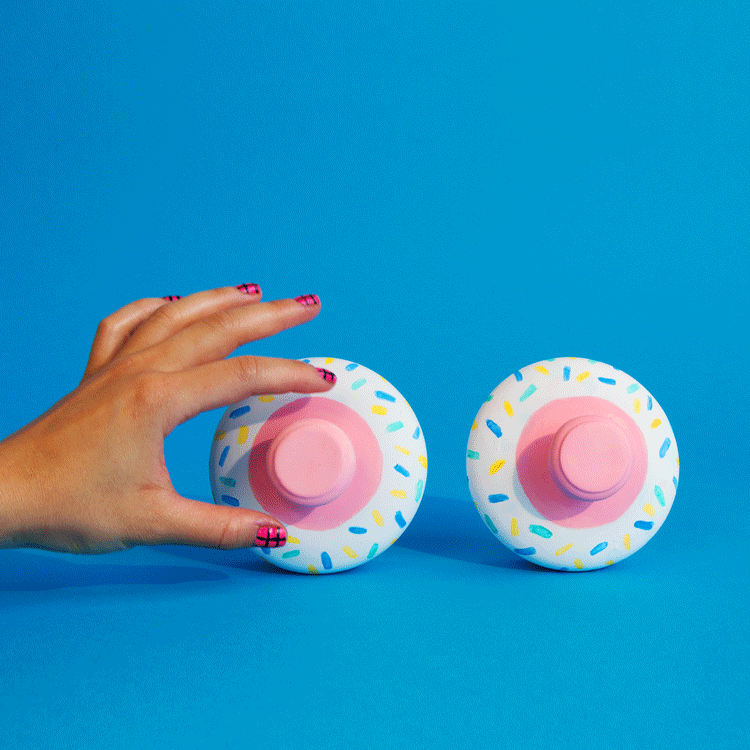We've all been there; the phase in life where you start discovering your own body and becoming curious of the bodies of other girls. Not necessarily in a sexual way, just wondering if everyone is made the same. Despite what you do know, or what you think you may know, here are 7 commonly asked questions about areolas, and their answers right here thanks to yourtango.com.
Snapshot Survey
Thanks for sharing your thoughts!
Please subscribe for your personalized newsletter:
Successfully subscribed!
Thank you for subscribing! Check your inbox for personalized content.
1. What Does It Mean if Your Areolas Are Bigger than Usual?
 Sometimes natural breasts look unnatural when things don't appear perfectly symmetrical. One areola on one breast may seem to have a little more roundness or unique shape to it than the one on your other boob.
Sometimes natural breasts look unnatural when things don't appear perfectly symmetrical. One areola on one breast may seem to have a little more roundness or unique shape to it than the one on your other boob.
It's completely normal to have one areola a little bigger or smaller than the other. The reason that one size might be different from another is due to the way your body developed in the womb. But don't be surprised if a woman has small areolas, but after pregnancy, they grow in diameter.
The purpose for an areola is to help a baby see where to nurse when with the mother. That's how nature takes care of itself and it's own.
2. What is Areola Pigmentation?
 Areola pigmentation is the color of the area surrounding the nipple. The area around the areola isn't always proportioned, and that's is natural. However, some women are born with very light areolas. The color is faint and barely noticeable so they wish to have that coloring enhanced.
Areola pigmentation is the color of the area surrounding the nipple. The area around the areola isn't always proportioned, and that's is natural. However, some women are born with very light areolas. The color is faint and barely noticeable so they wish to have that coloring enhanced.
For others, the areola color changes over time due to hormonal changes caused by childbirth or a medical condition.
And, for some extreme circumstances, such as breast removal, women want to have the natural appearance of an areola. So, they opt to have areola re-pigmentation surgery to enhance the look of their breasts.
3. Why Are Some Women's Areolas Brown and Others Pink?
 It's interesting that women come in different shapes and sizes, and the same is true about the area around the breast.
It's interesting that women come in different shapes and sizes, and the same is true about the area around the breast.
Areolas come in various shapes and sizes, yet, they are often described as pink or brown. Although it might seem logical to assume that race determines areola color, but that's not always true. African American women and Latino females can have pink areolas, and Anglo females can have brown. What determines areola color is a person's skin pigmentation mixed with hormone fluctuations.
4. Are Areola Bumps Normal?
 The first time you really look at your breasts and example the area around your nipple, you might have thought you had pimples on your chest.
The first time you really look at your breasts and example the area around your nipple, you might have thought you had pimples on your chest.
Areola bumps are also called "Glands of the Montgomery" are sebaceous glands which look like tiny bumps surrounding the nipple area. These glands are there to secrete oily fluid to keep the surrounding skin lubricated. This lubrication protects the sensitive skin around the nipple and helps to prevent the skin from drying out.
This little natural oil factory is extremely important especially when breastfeeding to prevent the mother from get cracked skin - it's also the reason why moms are told not to wash their breasts with soap while breastfeeding!
What you choose to wear while working out can have a significant impact on your comfort and performance. One essential item is the sports bra. Lack of proper support can lead to discomfort and muscle tissue damage. Choosing a good sports bra can help prevent these problems and ensure a great workout!
5. Why do My Areolas Sometimes Feels Sore?
 An intense love making session focused on your breasts may make your areolas feel sore, but this isn't the only reason pain in that area happens. Just before a woman gets her period her body produces certain hormones that cause changes in her breasts that increase the sensitivity of the areola area. But if you're not due for your menses and your areola area feels sore then it's time to consider if other environmental changes are making your boobs uncomfortable.
An intense love making session focused on your breasts may make your areolas feel sore, but this isn't the only reason pain in that area happens. Just before a woman gets her period her body produces certain hormones that cause changes in her breasts that increase the sensitivity of the areola area. But if you're not due for your menses and your areola area feels sore then it's time to consider if other environmental changes are making your boobs uncomfortable.
Remember, the areola area is made up of glands and sensitive tissue. Constrictive clothing. wearing sports bras with sweat too longer after working out, even a change in a person's body wash, or laundry detergent, can kick up the areola sensitivity and make things very uncomfortable.
Gallery Spotlight
Save and share the images that inspire you. Tag @allwomenstalk to get featured.
Save
6. Why do Areolas Get Darker during and after Pregnancy?
 A normal breast change is the color of the areola in pregnancy. Melanin is the hormone responsible for making areolas darker during pregnancy. In fact, the darkening of the areola area is an early sign of pregnancy along with breast tenderness. Women with pink nipples may be surprised that their areola area now is a darker shade of pink, even brownish, and wonder if there's something wrong with their body. There's nothing wrong. In fact, those hormonal changes let you know that your body is coming along just as it should. Also, the changes caused by the body's production of melanin will reverse after the baby is born letting your body, and areolas go back to normal. However, to try to reduce the amount of melanin that your body makes while pregnant, stay out of the sun.
A normal breast change is the color of the areola in pregnancy. Melanin is the hormone responsible for making areolas darker during pregnancy. In fact, the darkening of the areola area is an early sign of pregnancy along with breast tenderness. Women with pink nipples may be surprised that their areola area now is a darker shade of pink, even brownish, and wonder if there's something wrong with their body. There's nothing wrong. In fact, those hormonal changes let you know that your body is coming along just as it should. Also, the changes caused by the body's production of melanin will reverse after the baby is born letting your body, and areolas go back to normal. However, to try to reduce the amount of melanin that your body makes while pregnant, stay out of the sun.
7. Can I Make My Areola Smaller?
 Some women feel really self-conscious about having smaller breasts with really large areolas and want to find a way to reduce the color naturally. Unfortunately, a lot of the treatments online that promise a natural solution are not likely to be successful. So, if you really can't embrace your body the way it is naturally, there are nipple reduction surgeries or tattoo artists that specialize in areola enhancement. But using bleaches, subliminal message, or any other types of products are not going to change your natural size.
Some women feel really self-conscious about having smaller breasts with really large areolas and want to find a way to reduce the color naturally. Unfortunately, a lot of the treatments online that promise a natural solution are not likely to be successful. So, if you really can't embrace your body the way it is naturally, there are nipple reduction surgeries or tattoo artists that specialize in areola enhancement. But using bleaches, subliminal message, or any other types of products are not going to change your natural size.
The most important thing to remember is that your areola is as unique as you are, and for that reason alone, you should celebrate this wonderful part of your body.
Snapshot Survey
Thanks for sharing your thoughts!
Please subscribe for your personalized newsletter:
Successfully subscribed!
Thank you for subscribing! Check your inbox for personalized content.
Comments

Don't Miss the Latest Version
Get the latest stories, save favorites, and share with friends — all in one place.
Create your profile. Earn badges. Level up your reading.
Join Allwomenstalk to track your streaks, collect badges, and earn XP for the things you already do—reading, sharing, and taking quizzes.
- 🔥Daily streaks with gentle boosts for 3, 7, and 30 days.
- 🏅Collect badges like Reader I–III, Socialite, and Quiz Ace.
- ⚡️Earn XP for reads, deep reads, likes, comments, and shares.
It’s free. Takes 30 seconds. Already have an account? Sign in.




Feedback Junction
Where Thoughts and Opinions Converge